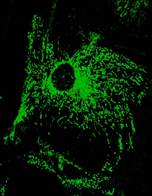SCIENCE AT THE EDGE SEMINAR SERIES
Interdisciplinary Physics Seminar
Friday, 26 October 2012 at 11:30am
Room 1400 Biomedical and Physical Sciences Bldg.
Refreshments at 11:15
Speaker: Paul Schumacker, Departments of Pediatrics, Medicine, and Cell & Molecular Biology, Northwestern University
Title: Mitochondrial Oxidant Stress/Signaling: Detection, Modification and Consequences in Health and Disease
Abstract:
Excessive oxidant stress induces damage to lipids, proteins and DNA, but low levels
of reactive oxygen species (ROS) can function as signaling messengers in cells. In
that regard, superoxide anion acts principally by interacting with iron-sulfur centers
in proteins, while hydrogen peroxide (H2O2) acts primarily by
altering protein thiol status. The generation of inter- or intra-molecular dithiols
can influence protein function by causing important changes in protein structure.
These changes are reversible by thiol oxido-reductases such as thioredoxin or glutaredoxin.

Our work implicates mitochondria as an important source of ROS signals in response to cellular stress. For example, hypoxia induces ROS release from the mitochondrial inner membrane to the intermembrane space, where it can act on specific targets. H2O2 in the intermembrane space can also diffuse to the cytosol, where it can trigger functional responses including transcription factor activation, calcium signaling, and AMPK activation. Understanding of where and how ROs signals act in the cell requires an ability to assess their effects in subcellular compartments. To address this we have expressed thiol redox-sensitive fluorescent protein sensors in subcellular compartments, allowing us to assess redox signaling in real time in response to cellular stresses. These studies are broadly of interest to a wide range of pathophysiological processes including cardiovascular, neurodegenerative, and pulmonary diseases.